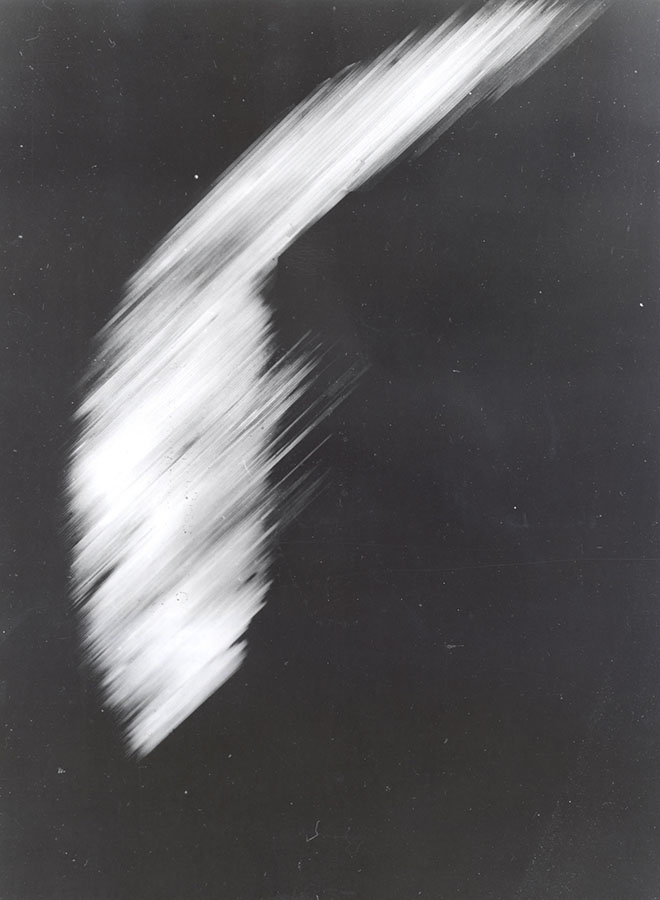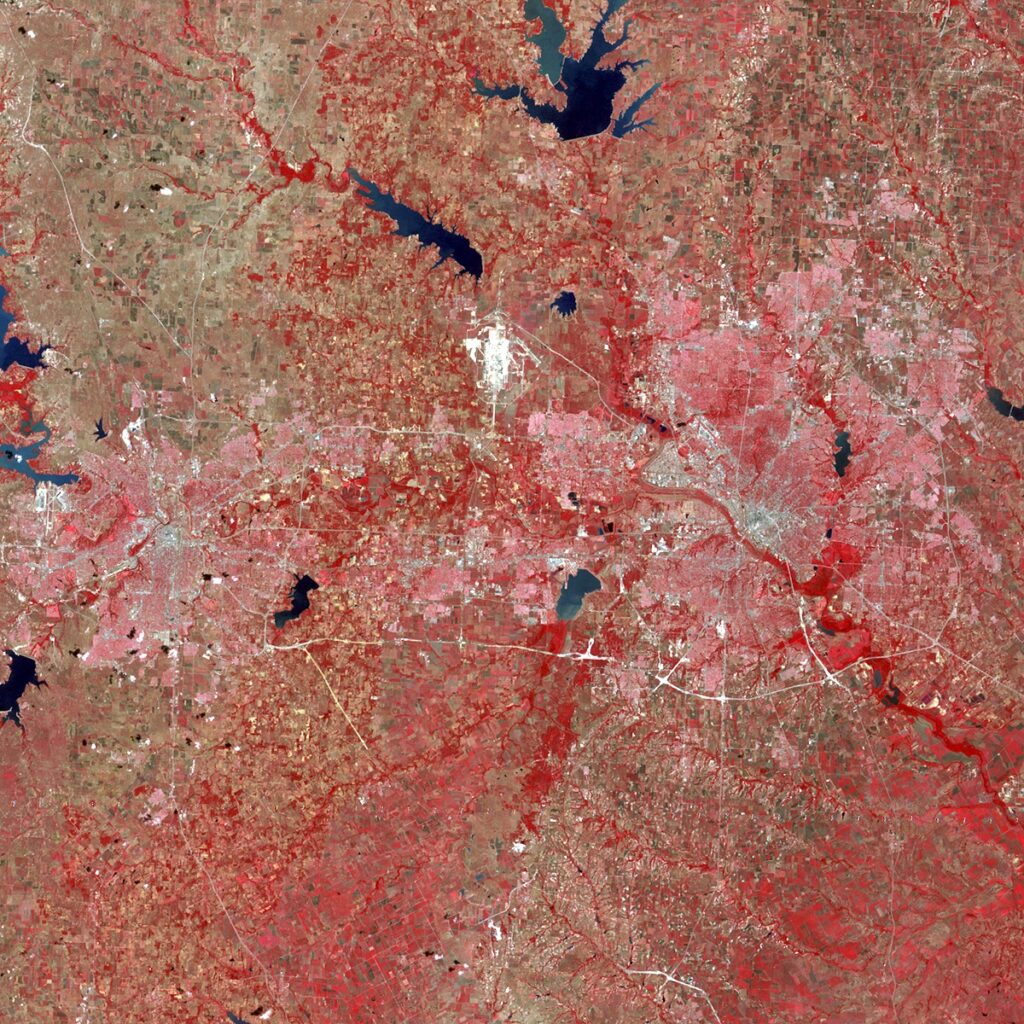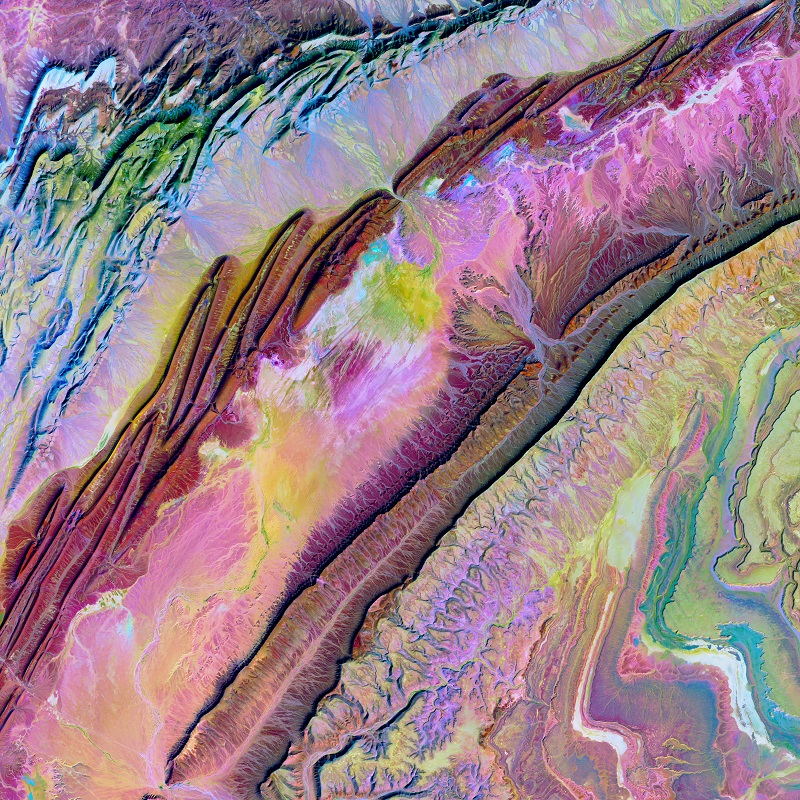Satellite Maps
What is a Satellite Map?
We build 2D and 3D Satellite Maps
Table of Contents
Satellite Maps
Prepare to have your mind blown! Satellite maps have completely changed the game in the way we view and engage with our world. It’s all thanks to incredible modern technology that grants us access to jaw-droppingly high-quality satellite images. These mind-blowing images give us a completely accurate representation of our planet’s intricate terrain, geography, and infrastructure. Let’s begin with the different types of satellite maps that exist today. Trust me, there’s so much to explore here!
First, we have aerial photographs. These captivating maps are created using ultra-high-resolution cameras mounted on airplanes that take breathtakingly detailed images of our planet’s surface. They’re used for everything from cartography and urban planning to agriculture and environmental research.
Next, we have satellite imagery. These maps are created by taking jaw-dropping images captured by satellites orbiting our planet. With the ability to capture expansive views of large areas, these maps are ideal for navigation, surveillance, and weather forecasting. They’re so powerful, they can even detect changes in vegetation and ocean currents.
And finally, we have topographic maps. These incredible maps are created by combining satellite imagery with elevation data to produce a three-dimensional model of the terrain. They’re perfect for hikers, mountaineers, and scientists alike, as they provide a detailed view of the land, allowing us to explore and understand the world in an entirely new way.
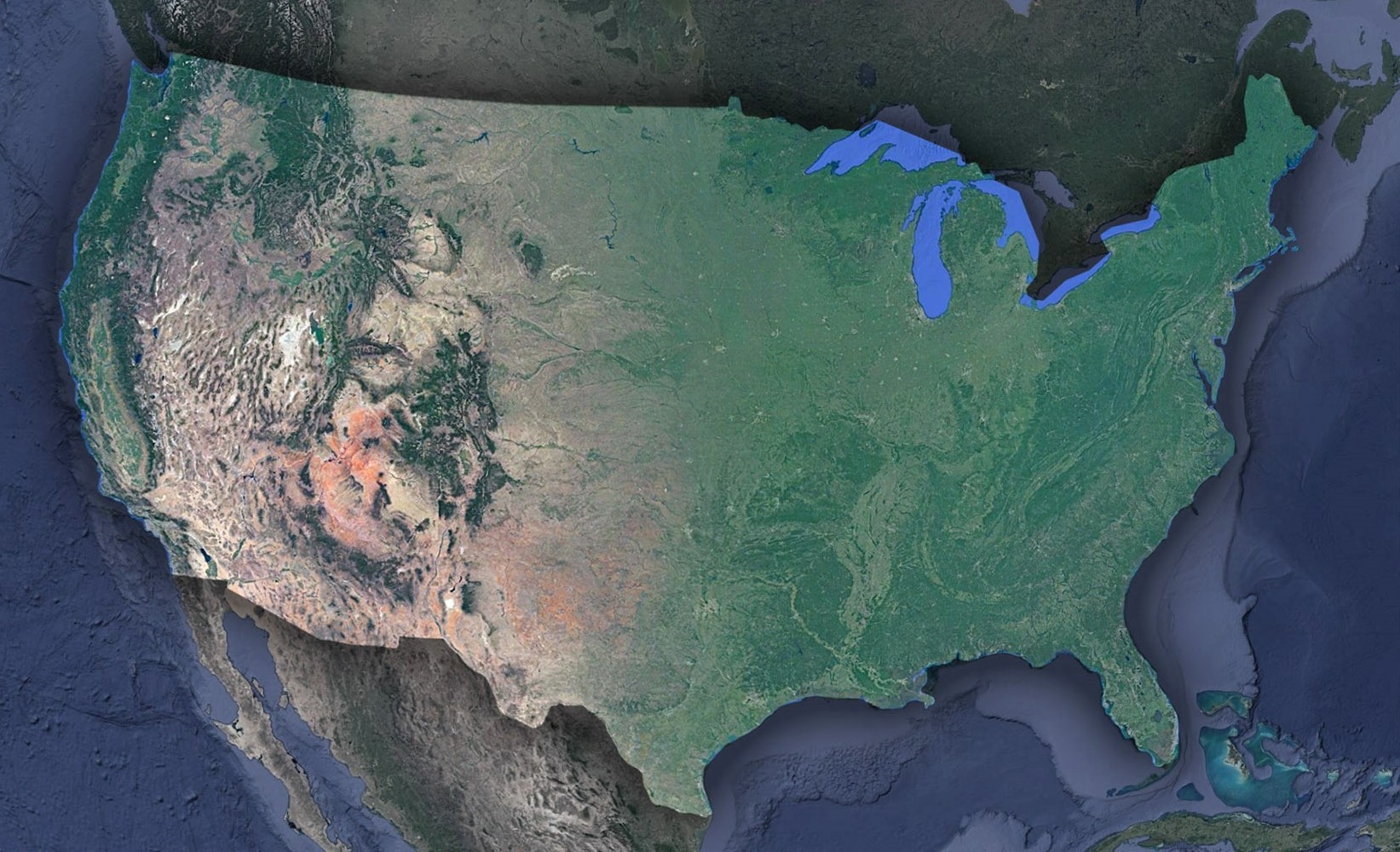 USA Satellite Map
USA Satellite Map
The uses of satellite maps are virtually endless! These powerful tools have the ability to completely transform the way we see and interact with our world. Let’s dive into some of the most exciting and impactful uses of satellite maps.
One of the most obvious uses of satellite maps is navigation. With GPS technology and satellite imagery, we can now navigate through even the most remote locations on the planet with ease. This has made travel and exploration safer, more accessible, and more enjoyable than ever before.
Another exciting use of satellite maps is in the field of agriculture. By using satellite imagery to monitor vegetation and soil moisture, farmers can make more informed decisions about planting, irrigation, and fertilization. This not only increases yields and profits but also helps to conserve water and other resources.
Satellite maps are also used extensively in urban planning and development. By analyzing satellite images, architects, and city planners can gain valuable insights into the layout and infrastructure of cities and towns. This helps them to design more efficient transportation systems, create better green spaces, and optimize the use of land.
In addition to these practical uses, satellite maps have also been invaluable in the fields of disaster relief and environmental research. After natural disasters such as hurricanes and earthquakes, satellite images are used to assess damage, locate survivors, and coordinate relief efforts. Similarly, satellite maps have allowed us to track changes in climate, deforestation, and other environmental concerns, helping us to better understand and address these issues.
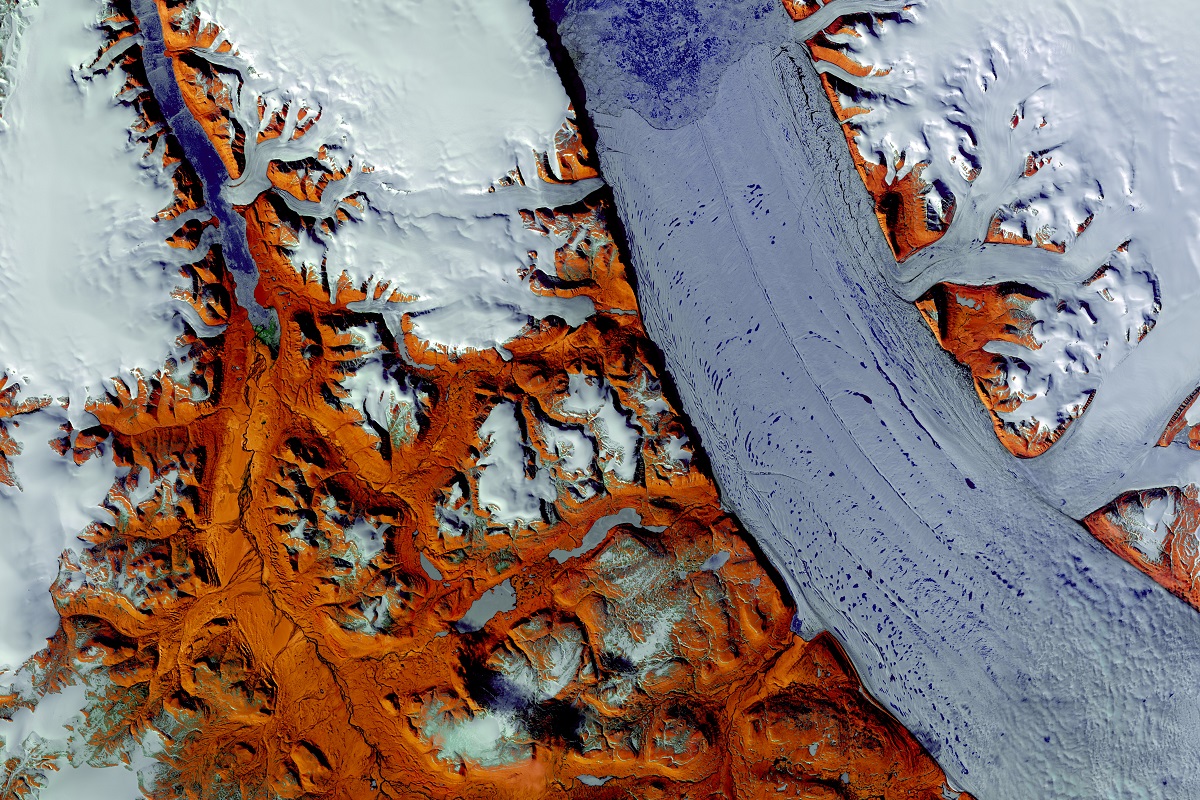 Peterman Glacier in Greenland
Peterman Glacier in Greenland
Satellite maps and imagery have not only revolutionized the way we explore and understand our world but have also inspired a new form of artistic expression. From breathtaking landscapes to mesmerizing patterns and shapes, satellite imagery has captured the imagination of artists and designers around the world, resulting in some truly stunning and innovative creations. By transforming raw data into stunning works of art, satellite maps have transcended their original purpose and have become a source of inspiration and beauty that showcases the incredible power of technology to enhance our understanding and appreciation of the world around us.
Satellite maps come in both 3D digital and 3D raised-relief type maps. Let’s explore some of the most exciting and innovative features of satellite maps:
- Zooming and Panning: One of the most impressive features of digital satellite maps is the ability to zoom in and out and pan across the map. We can zoom in and see incredibly precise details of the terrain, buildings, and infrastructure of any location on earth. This allows us to explore and understand the world in ways that were once impossible.
- 3D View: Many satellite maps now offer a 3D view, allowing us to see buildings and landmarks in detail. This feature is particularly useful for urban planning and development, as it allows us to see how buildings fit into the surrounding environment. This is also particularly useful for industries such as mining, construction, and architecture, where accurate 3D models are essential for planning and design.
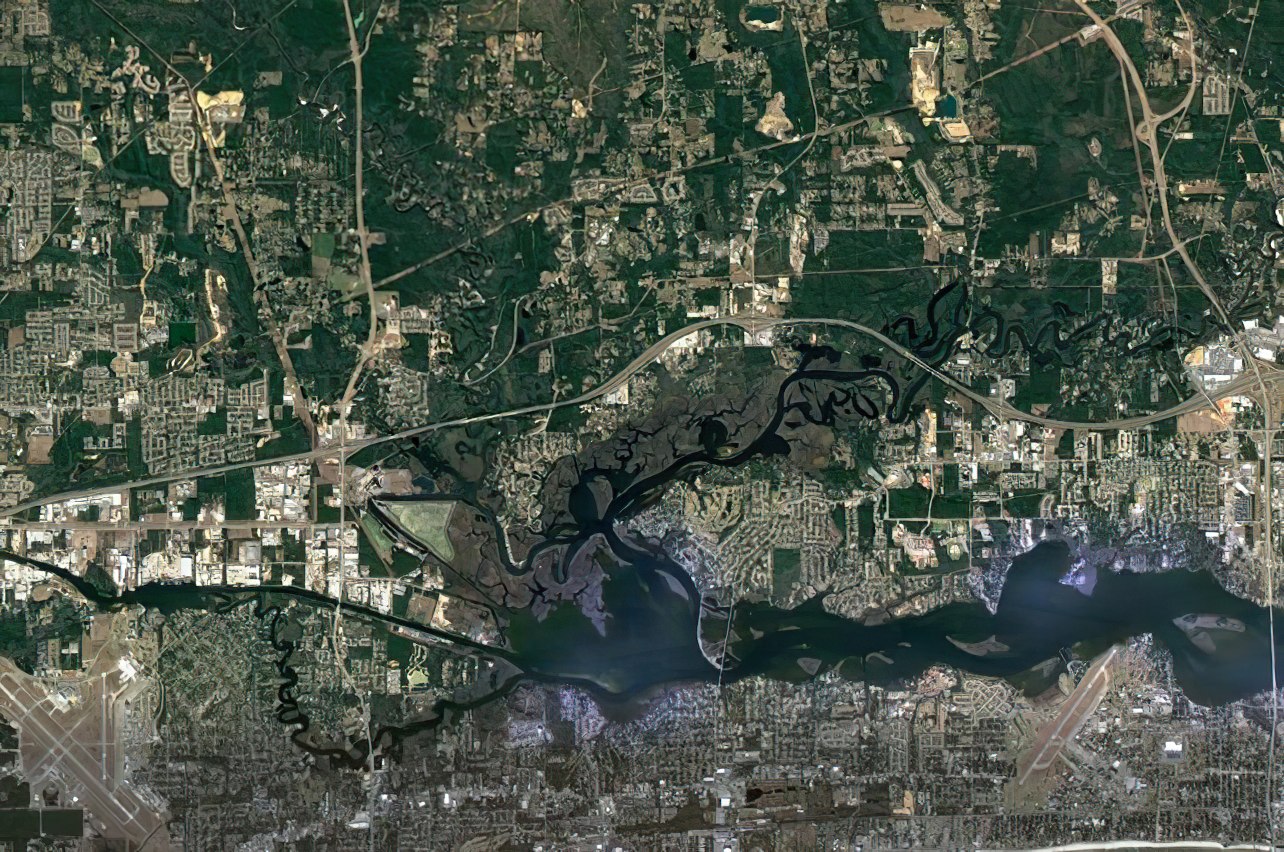 Mississippi Satellite Map
Mississippi Satellite Map
- Real-time Data: Some satellite maps provide real-time data, allowing us to track the movement of natural disasters, weather patterns, and even traffic. This feature is particularly useful for emergency responders, as it allows them to quickly respond to emergencies and save lives.
- Overlay Options: Satellite maps often offer a range of overlay options, including street maps, topographic maps, and weather data. This allows us to view different types of information on the same map, providing us with a comprehensive view of a region.
- Measurement Tools: Many satellite maps come with measurement tools, allowing us to calculate distances, areas, and other measurements. This is particularly useful for scientists, urban planners, and architects who need to measure land and building sizes accurately.
- Customization Options: Satellite maps often come with a range of customization options, allowing us to change the map’s appearance and functionality. For example, we can adjust the map’s colors and contrast, switch between day and night mode, and even choose the type of projection used.
- Analytical Tools: Satellite maps also offer powerful analytical tools that allow us to extract valuable information from the imagery. With advanced algorithms, we can analyze data on everything from population density and land use to traffic patterns and urban sprawl. This information is invaluable for urban planners, policymakers, and researchers, helping them to make informed decisions about the future of our planet.
- Historical Imagery: Another exciting feature of satellite maps is their ability to capture and display changes over time. By comparing satellite images taken at different times, we can track changes in land use, vegetation, and even weather patterns. This is particularly useful in monitoring the effects of climate change and other environmental concerns.
- Conversion from Digital to Raised Relief: Once a satellite map is created digitally, it can be used as the foundation for creating a physical raised-relief model. It changes from a two-dimensional to a three-dimensional object.
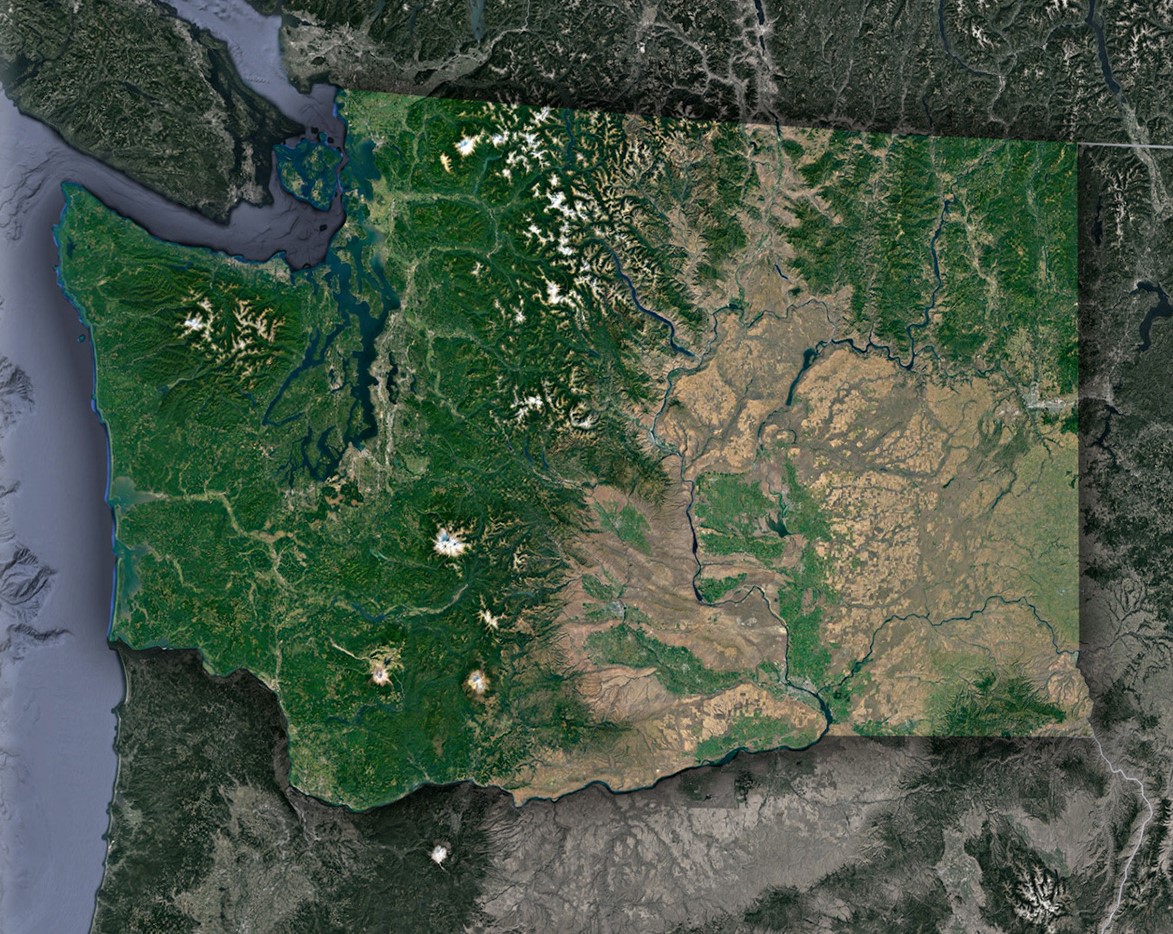 Washington Satellite Map
Washington Satellite Map
From revolutionizing navigation to aiding in disaster relief efforts, satellite maps have transformed the way we interact with and understand our world. Some of the most exciting and impactful benefits of satellite maps are:
- Improved Accuracy and Precision: Satellite maps provide us with highly accurate and precise data about the Earth’s surface. This data is essential for scientific research, resource management, and urban planning. With satellite maps, we can measure land use, monitor climate patterns, and track changes in the landscape with incredible accuracy.
- Cost-effective and efficient: Satellite maps are incredibly cost-effective and efficient, allowing us to map large areas of the Earth’s surface quickly and accurately. This is particularly useful in remote or inaccessible areas where traditional surveying methods would be impractical or impossible.
- Enables Better Decision-making: Satellite maps provide us with a comprehensive view of the Earth’s surface, allowing us to make informed decisions about resource management, urban planning, and disaster response. By analyzing satellite data, we can make more effective decisions that benefit society and the environment.
- Provides Vital Information for Disaster Response: Satellite maps are crucial for disaster response and recovery efforts. They allow us to quickly assess the damage caused by natural disasters such as earthquakes, hurricanes, and wildfires, and to coordinate response efforts more effectively. In some cases, satellite maps can also help us predict natural disasters and prevent or mitigate their effects.
- Supports Environmental Conservation: Satellite maps are essential tools for monitoring and managing natural resources, including forests, oceans, and wildlife. They allow us to track changes in the environment over time and develop strategies for conservation and sustainability. By using satellite maps, we can better protect the Earth’s natural resources for future generations.
- Enables Better Urban Planning: Satellite maps are crucial for urban planning, helping us to map out the layout of cities and towns and make informed decisions about transportation, infrastructure, and land use. They also help us to monitor urban development, detect changes in population density, and plan for future growth.
Gallery of Satellite Maps
There are many sources available for satellite maps. WhiteClouds can help you with this process. Example satellite maps are shown below.
2D Satellite Maps - Sample Countries, Earth as Art
2D Satellite Maps - Sample States
2D Satellite Maps - Sample States with Background
Gallery of Custom 3D Map Projects
Gallery of eCommerce 3D Raised Relief Maps
Shop WhiteClouds 3D Raised Relief Maps with 557,622 three-dimensional maps to choose from. These maps are not flat. They are three-dimensional, with the height being determined by Digital Elevation Model (DEM) data. These 3D maps are built by combining satellite imagery data from the USGS, Google Earth, Google Maps, and DEM data. Make a statement with these beautiful 3D map images from every part of the United States.
How 3D Satellite Maps are Made
There are several techniques used to create 3D satellite maps, and the process can vary depending on the scale and complexity of the map. However, the basic steps involved in making a satellite map are as follows:
- Create a base map. The first step in making a satellite map is to create a base map of the area. This can be done using imagery from a standard two-dimensional map, aerial photographs, satellite images, or WhiteClouds can do it for you.
- Determine the design style of the map. There are over 40 styles to choose from. Popular ones include satellite, terrain, topography, raised relief, and satellite hybrid.
- Add any special design features not included in the source map, such as special features, landmarks, legends, roads, cities, symbols, etc.
- Add elevation data. The next step is to add elevation data to the map. This can be done using a variety of techniques, such as contour lines, shading, or digital elevation models (DEMs).
- Print the Map Overlay. Latex vinyl materials are used for the map details and colors.
- Create the 3D physical map. Once the elevation data has been added to the map, a physical 3D structure is created that replicates the topography of the area. This can be done using 3D printed plastic or thermoformed molding/casting. Either approach is combined with the Vinyl overlay.
- Finish the map. This is where any excess materials are cutaway. Any special sealers, matte finishes, hardeners, or UV protection is applied. Wood, metal or plastic bases are built and border flocking may be applied.
Features & Benefits of Satellite Maps
- Remarkably Strong: You can drive a 1-ton truck over our satellite maps.
- Precision: We print our physical maps to scale as accurately as are the original files and images.
- Excitement: It is much easier to get excited about 3D views of your topography than flat printed maps.
- Stain and Water Resistance: Spills are easy to wipe up.
- Communication: Satellite maps are simple to understand with a quick glance.
- Affordability: Our 3D technologies allow you to order custom 3D maps for a reasonable price.
- Testability: 3D technologies are affordable enough to test designs, such as several versions of planned work.
- Consistency: Using modern print and casting technologies, you can easily recreate identical 3D maps.
- Portability: We use lighter materials than what was available in the past, making our satellite maps easy to transport.
Videos of 3D Maps
Map Design Styles of Satellite Maps
Many design styles, or base maps, serve as a starting point for your satellite map. We source and create our base maps using the same digital tools that expert cartographers use to create maps. Once you have selected your base map, everything else is fully customizable. We can layer informational text (such as landmarks or other points of interest) and even change the colors to suit your preferences.
Complex layers can be added such as streams and lakes, terrain, roads, and even more detail like political boundaries, religious, and other population-based demographics. Multiple layers can also be added to the same physical map. Take a look at the map style categories below for inspiration.
Technology and Materials Used in Satellite Maps
- With 3D printing technology, you are not limited to straight lines and boxes. The curves and cliffs are captured accurately and beautifully in astonishing detail.
- Your vision of the final 3D map determines which materials we will choose to produce the best results. We help you to determine the materials that best suit your project.
- We use fabrication technologies such as 3D printing, CNC cutting, and molding/casting.
- Satellite maps show incredible detail.
- Our maps are printed in full color (with over 17 million variations of color) for awe-inspiring presentations and displays. No painting required!
- Typically, we use a special process for finishing the sides of the raised relief maps in a suede-like material, similar to the finish of a jewelry box.
- Our in-house paint booth gives us flexibility in different types and grades of paint and finishing capabilities; we can provide UV-resistant coatings to protect the coloration of your 3M map for many years.
- We also offer customized additions to our 3D maps and models. Our in-house carpentry shop will build elegant bases, tables, or cabinetry to display any map you choose. Worried about dust? We can customize a case to protect your display as well. Our skilled artisans can hand-paint details to make your map a true work of art.
Pricing of Custom Satellite Maps
The price of 3D maps and models are generally based on your size requirements, specific design needs, and the amount of work it will take to produce. Each map is custom-built and charged for accordingly. The best way to determine cost is to email us, call us at 385-206-8700, or fill out the form below and let us bid on your project.
Get a Free Price Estimate for a Custom Satellite Map
Custom Fabrication Workflow
Common Questions & Answers
- What is the largest map you can fabricate? There is no limit to the size of a map we can build. There are practical limits that will impact shipping and installation, but we work closely with our customers on these special requirements.
- What type of 3D maps can you fabricate? All types. Satellite Maps, Terrain Maps, Topographical Maps, Raised Relief Maps, USGS Maps, Contour Maps, and many more.
- Can you fabricate with different technologies and materials? Yes. Our most common fabrication technology is 3D Printing, but we can also build 3D Maps with CNC Cutting, 3D Foam, Molding/Casting, Thermoforming, and Sculpting.
- What materials can you 3D print in? We match the correct material and fabrication process to your requirements in terms of presentation, size, and transportability. We can 3D print in PLA, FDM, Full-Color Sandstone, UV-cured resin, plastic, rubber-like, acrylic, and nylon – as well as combining multiple technologies.
- Can you sign a Non-disclosure Agreement that you supply? Yes.
- How long will it take to create my map? That depends on the design and size of the map. A more complex or detailed map will take longer than a simple map, we can’t really say exactly how long it will take until we have the chance to understand what type of map you want fabricated. Generally, smaller standard maps can be a couple of weeks and large museum exhibition maps can be 6 months.
- What do you need from me to start the map fabrication? Boundaries are a good place to start. Determining map styles, sizes, height (may be exaggerated), and cabinetry needs are all part of the process. Special design features can also be added.
What are satellite maps? Satellite maps are images of the Earth’s surface captured by satellites orbiting the planet. These maps can show different features of the Earth, such as the topography, vegetation, bodies of water, and man-made structures like roads and buildings. By using satellite maps, people can study and monitor changes in the environment, plan land use and development, and track weather patterns and natural disasters.
What do satellite maps show? Satellite maps show detailed images of the Earth’s surface captured by satellites orbiting the planet. These maps can reveal a variety of features, including natural formations such as mountains, rivers, and forests, as well as human-made structures like buildings, roads, and other infrastructure. Additionally, satellite maps can display various types of data overlays, including population density, weather patterns, and environmental changes over time. By utilizing satellite maps, individuals can study and understand the physical and cultural landscape of the Earth in greater detail, providing important insights into our planet’s resources and helping to inform decision-making in a range of fields.
How are satellite maps made? Satellite maps are made by capturing images of the Earth’s surface using specialized cameras aboard satellites orbiting the planet. These cameras use a variety of technologies to capture images in visible light and other parts of the electromagnetic spectrum, such as infrared and ultraviolet radiation. The images are then transmitted back to Earth and processed using computer algorithms to correct for distortions caused by the satellite’s orbit and atmospheric conditions, and to create a seamless, high-resolution image of the Earth’s surface. Additionally, data from other sources, such as ground-based sensors and aerial photography, may be incorporated into the final map to provide additional detail and context. The resulting satellite maps can be used for a range of applications, from environmental monitoring and resource management to urban planning and emergency response.
Who uses satellite maps? Satellite maps are used by a wide range of individuals and organizations across various fields. Some common users of satellite maps include:
Scientists and researchers – They use satellite maps to study and monitor changes in the environment, including changes in climate, land use, and natural resources.
Government agencies – They use satellite maps for various purposes, including monitoring weather patterns, managing natural resources, and tracking the spread of diseases.
Urban planners – Urban planners use satellite maps to plan and design cities and towns, including analyzing land use patterns, transportation networks, and zoning regulations.
Military and defense organizations – Military personnel use satellite maps for intelligence gathering, surveillance, and reconnaissance.
Businesses and industries – Businesses use satellite maps for various purposes, including site selection, supply chain management, and market analysis.
Individuals – Individuals use satellite maps for personal interests, such as exploring unfamiliar areas or planning outdoor activities.
How do I read a satellite map? Reading a satellite map can be a little tricky if you’re not familiar with the symbols and colors used to represent different features. Here are some tips to help you read a satellite map: Start by understanding the legend or key – this is a box that explains what the various colors, symbols, and lines on the map represent.
Look for other data overlays – some satellite maps may have additional data overlays, such as population density, weather patterns, or environmental changes over time. These overlays may be represented by different colors or symbols. Reading a satellite map requires paying close attention to the legend or key, as well as the colors and symbols used to represent different features. With a little practice, however, anyone can learn to read and interpret satellite maps.
Look for land features – satellite maps will show different types of land features, such as forests, mountains, and bodies of water. These features will often be represented by different colors or shading. Look for human-made structures – satellite maps can also show man-made structures, such as buildings, roads, and other infrastructure. These structures may be represented by different colors or symbols, depending on the type of structure. Pay attention to the scale – satellite maps will often have a scale bar that shows how many miles or kilometers are represented by a certain distance on the map.
- How does a satellite map work? A satellite map works by capturing images of the Earth’s surface using cameras or sensors mounted on a satellite orbiting the planet. These images are transmitted back to Earth, where they are processed and assembled into a map that can be viewed and analyzed by users. The satellite’s camera or sensor captures images of the Earth’s surface by detecting different parts of the electromagnetic spectrum, such as visible light, infrared radiation, and ultraviolet radiation. These images are then transmitted back to Earth in the form of digital data, where they are processed and converted into visual images using specialized software. To create a satellite map, multiple images of the same area are taken from different angles and at different times. These images are then stitched together to create a seamless, high-resolution image of the Earth’s surface. The resulting map can be enhanced with various overlays, such as labels, symbols, and other data, to provide additional information and context. Once the map is created, it can be used for a range of purposes, such as environmental monitoring, resource management, urban planning, and more. Users can view and analyze the map to gain insights into various aspects of the Earth’s surface, such as land use, climate patterns, and natural resources.
- What is the difference between a satellite map and a topographic map? A satellite map and a topographic map are two different types of maps that provide different types of information. A satellite map is created by capturing images of the Earth’s surface using cameras or sensors mounted on a satellite orbiting the planet. These images provide a visual representation of the Earth’s surface and can show features such as bodies of water, forests, mountains, and man-made structures. Satellite maps are often used for environmental monitoring, resource management, urban planning, and other applications where visual data is important. On the other hand, a topographic map is a type of map that shows the physical features of the Earth’s surface, such as elevation, contours, and landforms. These maps are created using ground-based surveys, which provide precise measurements of the Earth’s surface. Topographic maps are used for a range of applications, including hiking, mountain climbing, and other outdoor activities that require knowledge of the terrain. While satellite maps and topographic maps can provide complementary information, they are created using different methods and provide different types of information. Satellite maps provide a visual representation of the Earth’s surface, while topographic maps provide detailed information about the physical features of the Earth’s surface.
What is a google satellite map? A Google satellite map is a type of map created by Google that uses satellite imagery to show a visual representation of the Earth’s surface. It is part of the suite of mapping products offered by Google, which includes Google Maps and Google Earth. Google satellite maps are created by using images captured by satellites orbiting the Earth. These images are then processed and stitched together to create a seamless, high-resolution map of the Earth’s surface. The resulting map can be viewed from different angles and zoom levels, allowing users to explore and analyze the Earth’s surface in detail. In addition to satellite imagery, Google satellite maps also include additional information such as roads, landmarks, and labels. Users can search for specific locations, get directions, and explore different parts of the world using the map. Google satellite maps are used for a wide range of applications, including urban planning, environmental monitoring, and disaster response. They are also popular among travelers and outdoor enthusiasts who use them to plan trips and explore new destinations.
Do Satellite maps show property lines? Satellite maps generally do not show property lines with high accuracy. While satellite imagery can provide a visual representation of the Earth’s surface, the resolution of the images may not be high enough to show property lines accurately. In some cases, satellite maps may include approximate property lines, but these should be considered only as estimates and not relied upon for legal or property-related decisions. Property lines are typically defined and maintained by local governments or land surveyors using more precise methods, such as land surveys or property maps. To obtain accurate information about property lines, it is recommended to consult official land records or to hire a licensed land surveyor.
Do you have a question we didn’t answer? Don’t hesitate to contact us at 1-385-206-8700 or [email protected].
Worldwide Delivery
WhiteClouds has delivered maps around the world.
History of Satellite Maps
The history of satellite maps is a fascinating journey through the development of modern technology and our understanding of the world. It all began in the mid-20th century, during the Cold War, when the United States and Soviet Union were in a race to develop new technologies that could provide them with a military advantage.
In 1957, the Soviet Union launched the first satellite, Sputnik, into space, sparking a new era of space exploration and scientific discovery. Soon after, the United States launched their own satellite, Explorer 1, and began developing new technologies to explore and study the Earth from space.
In the 1970s, NASA launched the first satellite designed specifically for Earth observation, the Landsat series. These satellites provided the first high-quality images of the Earth’s surface, and paved the way for the development of modern satellite maps.
The 1980s saw a major shift in the use of satellite maps, with the emergence of the Global Positioning System (GPS). GPS technology allowed for precise positioning and navigation on a global scale, making satellite maps more accessible and useful than ever before.
The 1990s and early 2000s saw a rapid increase in the number of satellites in orbit, as well as advancements in imaging and data processing technologies. This led to the development of more detailed and accurate satellite maps, which are now used in a wide range of industries and applications, from navigation and disaster relief to scientific research and urban planning.
Today, satellite maps continue to evolve and improve, with new technologies and applications emerging all the time. With the potential to provide insights into everything from climate change and environmental concerns to urbanization and infrastructure development, satellite maps are a powerful tool for exploring and understanding our world. And with new advancements on the horizon, the future of satellite maps is sure to be just as exciting and transformative as its history.

